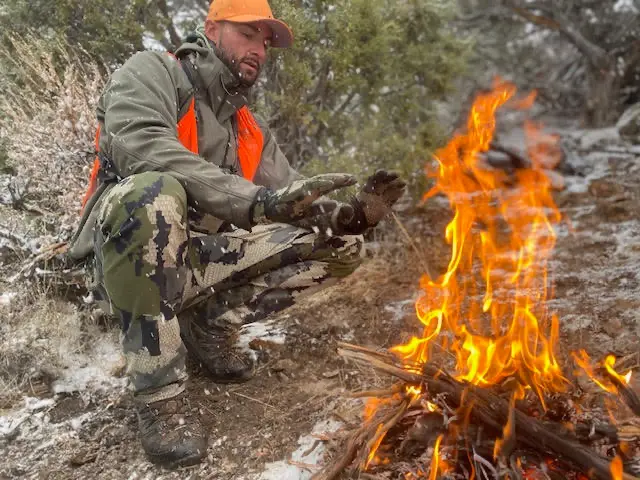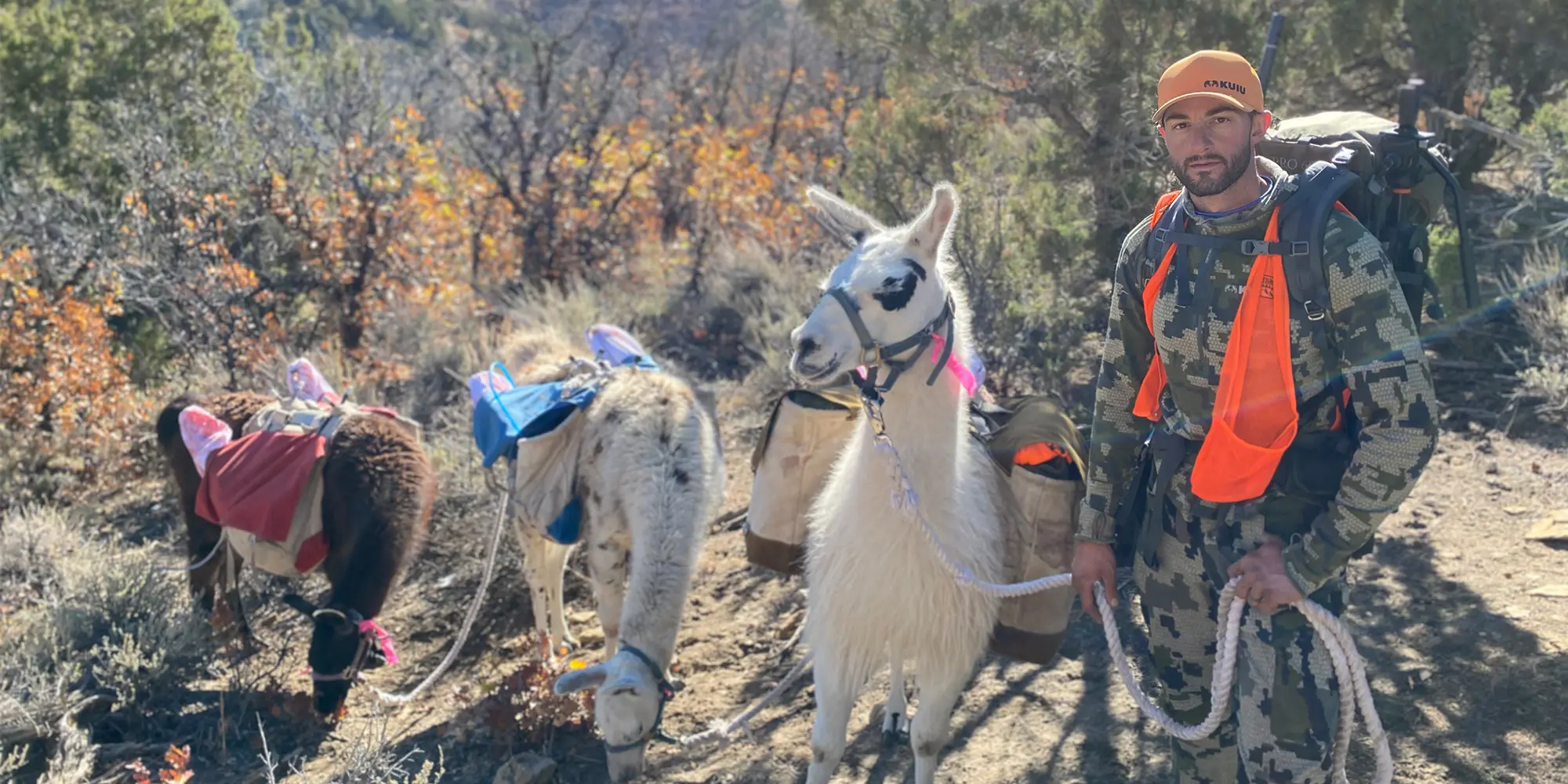
NOTICE: Certain links on this post may earn a commission for Western Hunter Magazine from Amazon or our other affiliate partners when you make a purchase. Thank you for your support.
A Leg Up On Your Llama Knowledge
In my previous article, we were able to shed some light on the advantages of using llamas and how the barrier of entry to learn may be lower than you think. Now that I’ve got you considering llama use for yourself, let's dive a little more into the weeds and develop a better understanding of llama pannier packing and handling.
Although it may seem as simple as taking your dog for a walk, there are some do’s and don’ts when handling llamas.
Llama Handling
Understanding how to handle an animal on a lead rope may seem intuitive, but I find many newcomers taking too much control or too little control at the wrong times.
Allowing enough lead rope to be between you and the llama’s head is important. Remember, llamas are prey animals, it’s in their nature to be aware of their surroundings and constantly alert. When you have a short hold on the lead rope, you disable the llama’s ability to look as it pleases. This will create a constant battle of head control that could develop into a negative working relationship and a llama that is sour to being led. As a rule of thumb, provide enough rope for the llama to comfortably observe on its own terms or reach down for a bite of grass, but without creating a tripping hazard.
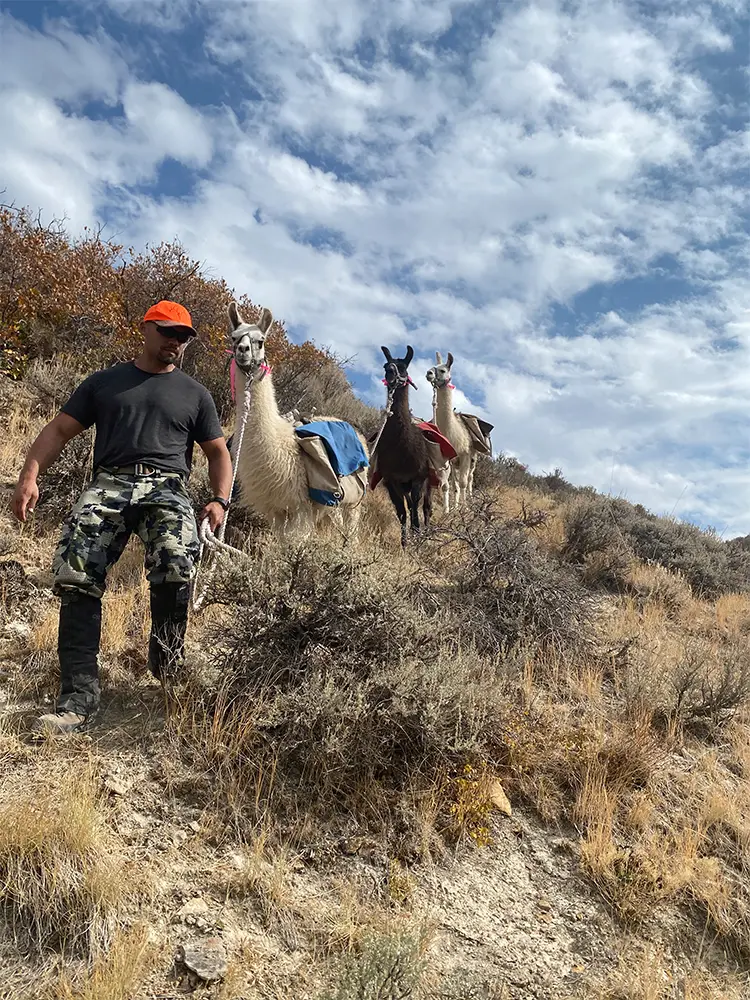
A rope that is held with too much slack or a rope that is too long could result in the animal stepping over the slack. If the llama were to spook or pull back, this could become a dangerous situation, resulting in injury to the animal or yourself.
When holding a lead rope, fold any additional slack back on itself. Be sure to hold it in a manner that does not have any of the rope wrapped around your hand, wrist, arm, or fingers. As I previously mentioned, a spooked animal may pull back without notice and with more power than your joint or limb can withstand to prevent injury. A lead rope should never be attached to clothing or your pack. In the hand is the only place it should be while actively hiking with llamas.
Instances in which more control of the head of the llama may be necessary and appropriate include: removing the lead rope from the halter, saddling the llama, brushing, or when leading a llama through a channelized area or any area that requires an exact path to be taken.
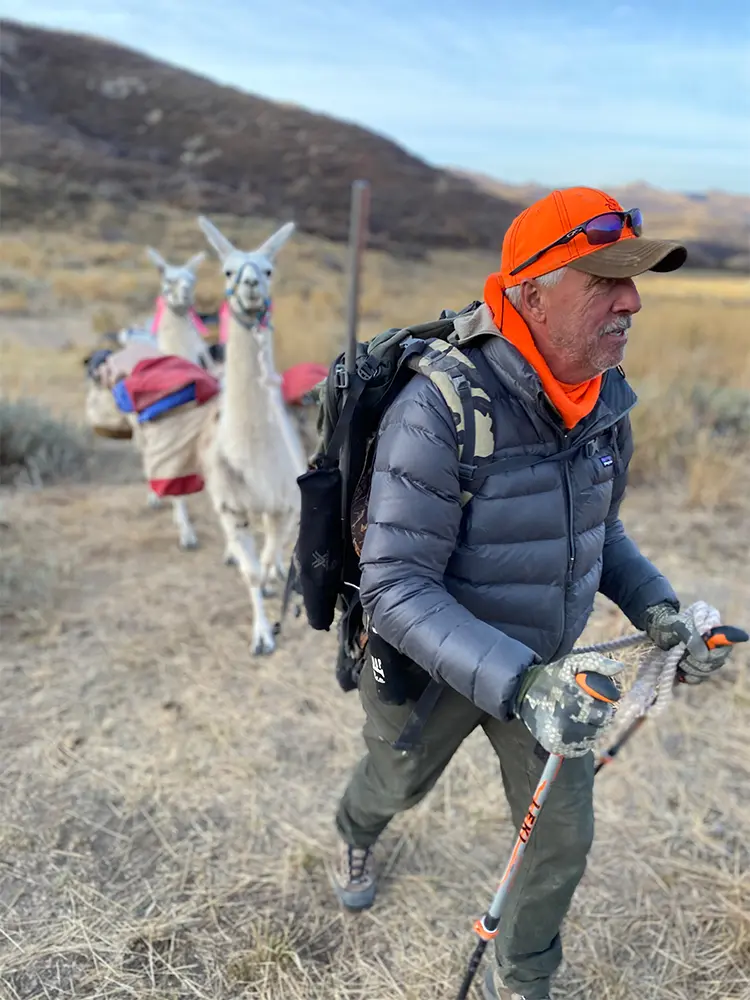
Despite your llama having already been conditioned to human interaction, it is important to remember that they still have instinctual prey-like tendencies and behaviors. To top it off, more than likely, this will be the first time this animal has ever met you. When I approach a llama, or any pack stock, for that matter, I avoid direct eye contact. I’m not telling you to stare at the ground, but don’t make it a point to gaze into their soul.
Predatory animals, which includes the human species, have forward-facing eyes. That sort of intense stare can create discomfort in any prey animal, especially when off-lead or out of your control. When I approach a stock animal, I also like to come from a 45-degree angle toward their shoulder. This allows them to easily see me approaching and keeps me out of any blind spots.
It’s important to note that llamas are not fond of being pet on or any other physical sign of your appreciation. In fact, too much human interaction in such a manner can leave a llama feeling as if you’re part of the herd and may result in negative behavior if they find you lower on the pecking order than themselves. The llama/human relationship is all business and should remain such.
Lost Llama
If a llama were to come out of your control, it would likely stay with the “herd,” even with just one other llama in its presence. On the off chance it does take off, there are two suggested courses of action you should take:
The first is to retrace your route back to the trailer. Llamas have scent glands located on their hind legs that brush up against vegetation as they pass through the landscape. A llama can and will likely return to the trailer, a spot they know to be safe. If the trailhead/trailer comes up fruitless, head to the nearest high point or a location with a good vantage point free of timber and thick vegetation. Yet again, that instinctual prey behavior will create a desire to be in an area where they can spot someone or something approaching from a distance.
Now that you have a better understanding of how to lead and behave around your llamas, let’s talk about getting the panniers packed.
Llama Pannier Packing
Loading a pannier correctly could arguably be the most important piece of knowledge to take away from this article. An improperly loaded set of panniers has the potential to cause serious injury to a pack animal. I approach the loading of panniers in a very similar manner to organizing the pack on your back. Many of the same rules apply:
Rule 1# - Keep the heaviest items in the pannier the closest to the llama’s body (the part of the pannier making contact with the llama’s body). Just like a backpack, as we move items further away from our person, the more that load loses stability and puts extra strain on the carrier. That strain is extrapolated as the weight of the item is increased.
Rule #2 - Sharp items should be packed to the outside of the pannier, avoiding direct contact with the llama’s body. Should something inadvertently open or snag, we’d rather cut a pannier than the animal assisting us.
Rule #3 - For items that exceed the length of the pannier, position so that the end that protrudes is facing toward the rear of the llama. This will prevent the protruding item from catching on to any vegetation. Other options include top-loading the item so it sits on top of the pannier. You can divide the extra length so it evenly rests upon the pannier.
*Llamas do not have a strong topline like a horse or mule, and for that reason, you must be careful about packing weight on top of their saddle. Lightweight items are often OK, but it’s worth checking with your rental company if you plan on doing so.
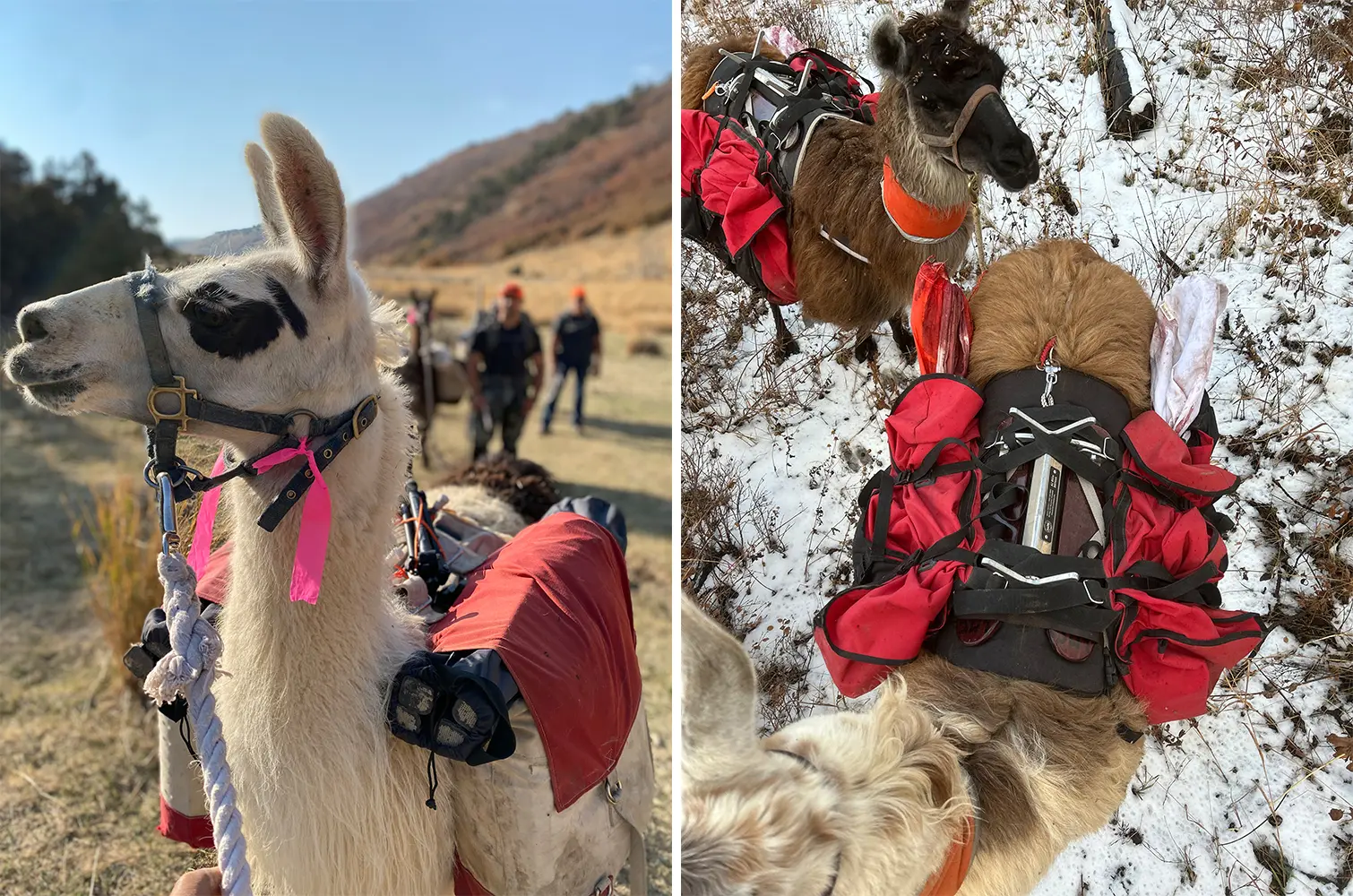
Rule #4 - Tighten all straps on the panniers and tuck away any remaining ends. This is just an addition to Rule #1–a tightly cinched load generates less movement, resulting in less unnecessary exertion.
Rule #5 - Creating equally weighted panniers is the key to successful stock packing. Your rental company should provide you with a small carry scale to weigh each pannier. Getting within a 1-lb weight difference for a set of panniers is the standard and, in most cases, is easily accomplished. There are instances in which evenly weighted panniers don’t ride the same because of the difference in shape/size. In this case, it may be necessary to throw a rock or two in a pannier to get the panniers to ride evenly. Packing is a bit of an art rather than a science.
Pannier Weighing
A gradual, deliberate lift of the pannier is the best way to get an accurate weight reading. Quickly lifting with your hand scale can cause the scale to bounce and result in a miscalculated weight. Use the same scale on each pannier, with the same person measuring, to avoid discrepancies and differing human opinions on how the scale is read. Consistency is key.
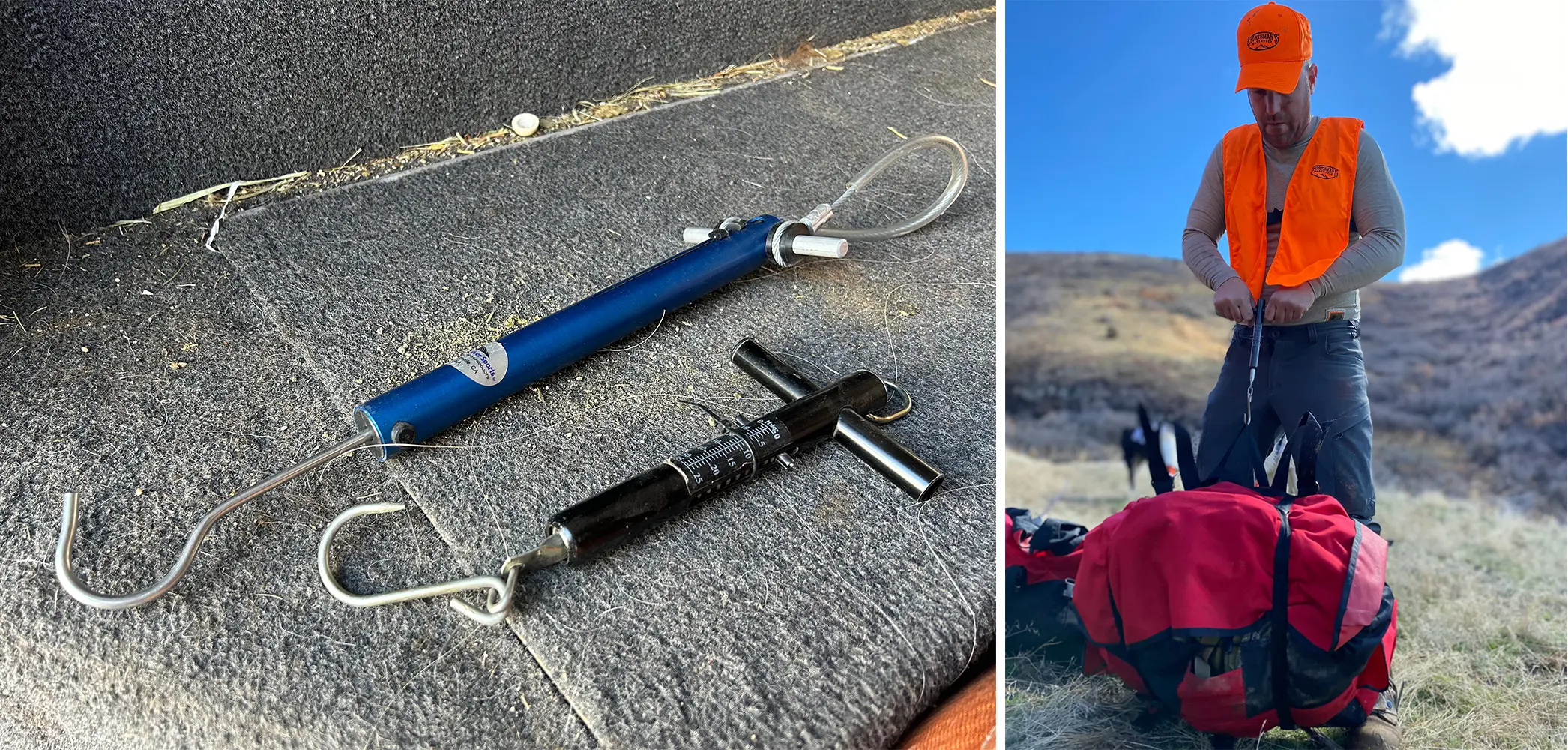
*Some panniers come with cross straps to lift the load off of the animal’s side. This allows the load to carry higher and closer to the animal’s midline. It also takes the bottom of the panniers an inch or two off the animal’s side which reduces friction to the animal’s body. Use these straps if they are available!
Meat/Cape Packing
In the previous article, we discussed the typical amount of weight a llama can carry–50-80 lb. These numbers reflect carrying the weight of camp and gear items. When hauling meat, weight capacity can increase to the range of 100-120 lb. This number fluctuates to a higher limit because meat (specifically bone-in) carries tighter to the body. A llama balances almost ¾ of its weight on its front shoulders. When carrying meat, you should attempt to keep the bulk of the weight packed as closely to the front of the pannier as possible, thus keeping the heaviest portion as close to the shoulders as possible.
When packing in this manner, you will create a void toward the back of the pannier (the part of the pannier closest to the hind end of the llama). Packing a jacket or other item toward the rear of the pannier helps fill the void so there is less opportunity for a quarter to shift in transit.
When packing quartered meat, I always place the inside of the quarter toward the llama’s body, as this is the most “flat” piece of the quarter. The flatter the surface area, the more contact it will have with the llama’s body, creating a tighter fit and resulting in an easier carry. In my opinion, carrying the quarters of the animal on the opposite sides of the llama’s body creates the most snug and low profile fit. For example, I would carry the left front shoulder of your elk or deer on the right side of the llama’s body.
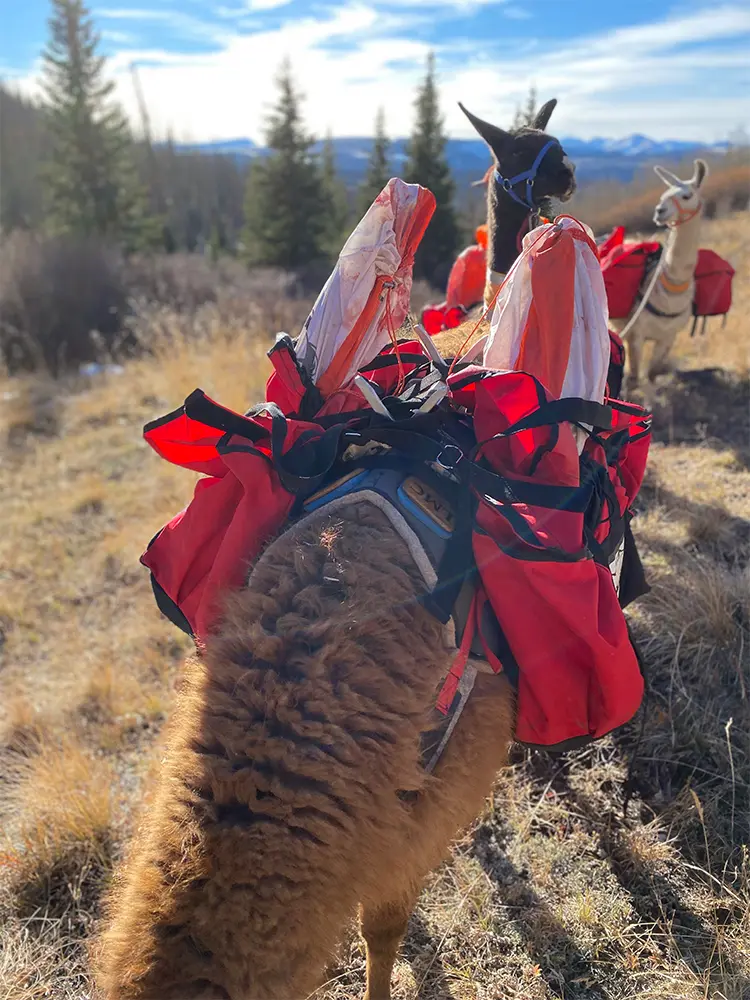
I can think of several times I have wanted to haul a cape out of the backcountry, only to decide that the time and energy required to get it out exceeded my capacity to do so. Let your cape thoroughly cool in a shaded area, preferably in a location with a good breeze that will keep cold air circulating onto it. Once the cape is ready to be folded, place it in an additional game bag. The game bag will not only help keep the cape from opening up but also create a more compact load that is easier to carry.
Be mindful of dropping temperatures and the likelihood that you will be unable to properly fold your cape when it freezes!
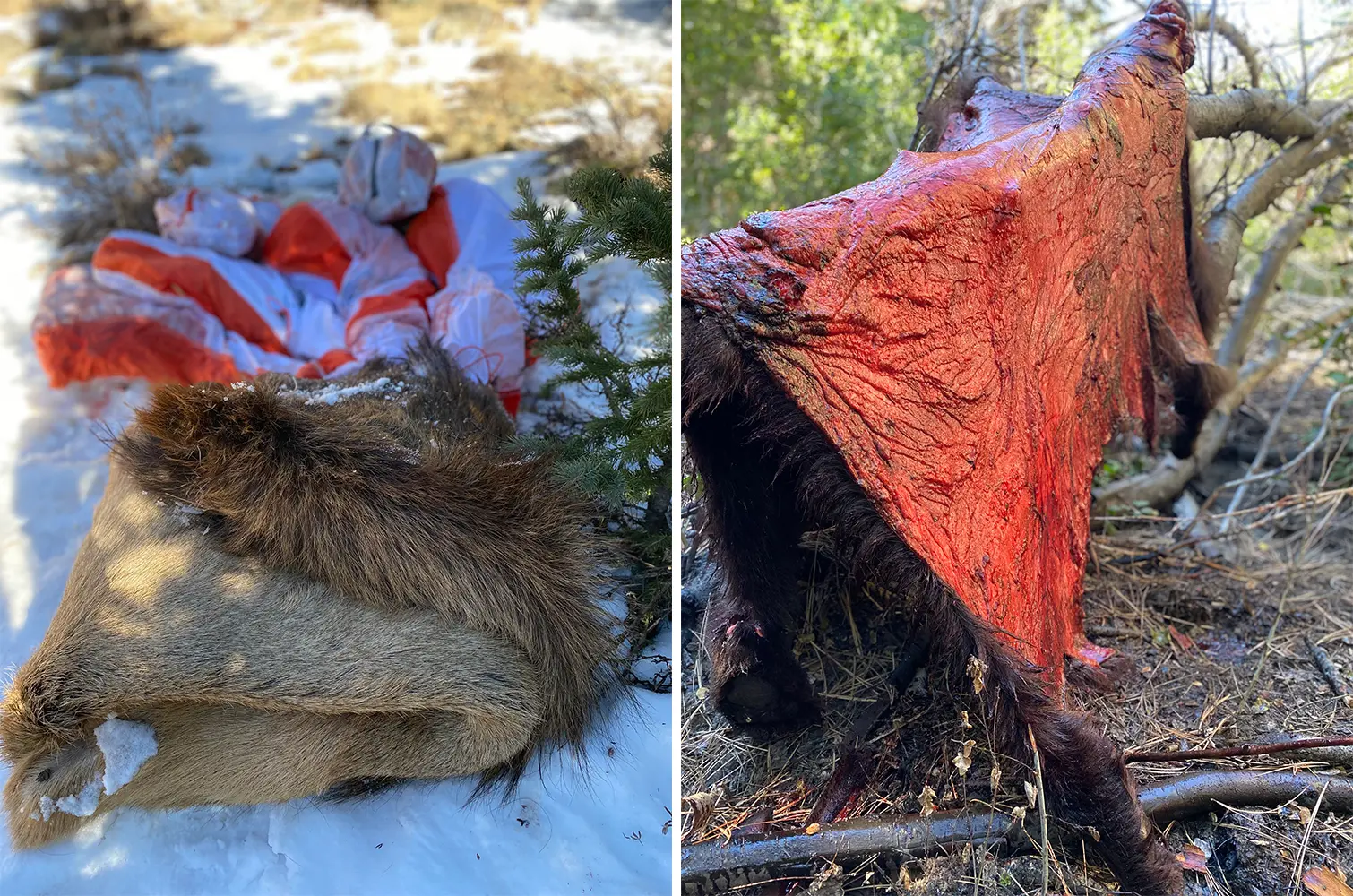
Understanding how to interact with a llama will provide for a better working relationship and a more enjoyable experience. Knowing what your packing limitations are and how to “Tetris” those items into your panniers are the meat and potatoes of getting it done on your own.
In the last article of this series, I’ll provide a detailed explanation of how to efficiently move with pack stock, how to pick locations suitable for securing llamas, and cover logistical feed considerations.


